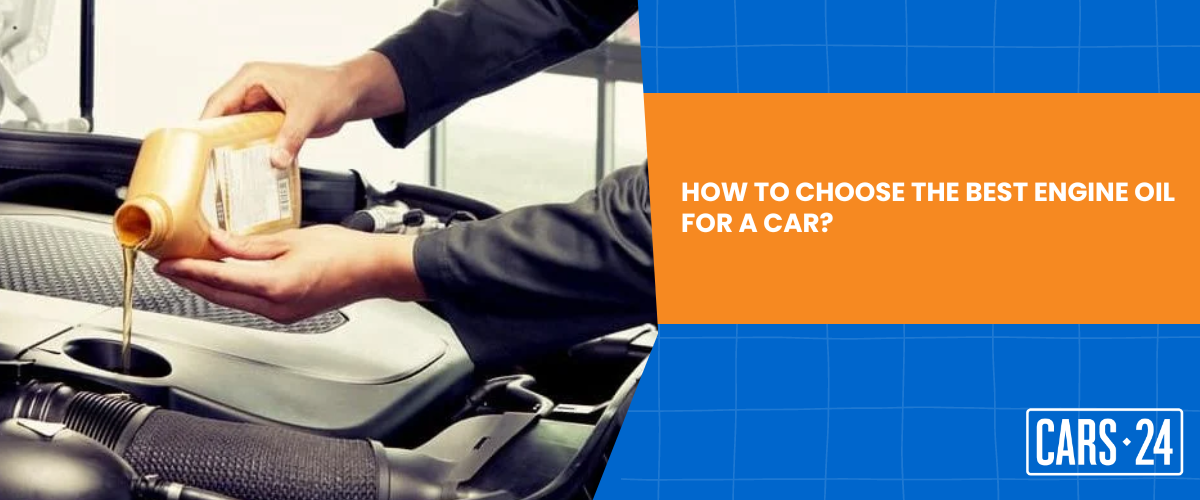Engine oil is like the lifeblood of your car, keeping its heart, the engine, running smoothly. Just like how we need the right nutrients to stay healthy, your car needs the right engine oil to perform at its best. Choosing the wrong oil can lead to increased friction, wear and tear, and even engine failure.
Whether you’re a car enthusiast or just looking to take better care of your vehicle, this guide will help you make the right choice when it comes to the best engine oil in Australia for your car!
How to pick the right engine oil?
Before you go ahead and purchase the engine oil, its important to know what grade of oil should be used. The same can be figured out by having a look at the cars instruction manual. In the section below, well give you details of all the essential terminologies of engine oil to help you choose the best one for your beloved car.
API standard (SL, SM, SN, or SJ)
This is a standard set by the American Petroleum Institute to classify motor oils based on their performance. You should refer to your cars owner’s manual to determine the API Standard your cars manufacturer recommends for the best engine oil in Australia.
Viscosity grade
The viscosity grade determines the thickness of the engine oil along with its stress-holding capacity. Thin engine oil works well for winters, but engine oil of a higher grade is recommended for summers. This is also why performance cars, whose engines often work at very high temperatures, come with a higher viscosity of oil. The viscosity of the engine oil is determined through a set of two numbers, for example, 10W-30, 0W-40 15W-40, or 5W-30. For example, if an engine oil is of grade 5W-30, it means its viscosity grade of cold start is 5W. Engine oil of grade 0W-40 shows that a car can have a cold start even in freezing conditions as the oil is thin enough to flow through all the parts. An oil grade of 10W-30 generally works for places where temperatures are pretty high. The lower the Low Winter(W) viscosity, the easier it is for the engine oils to flow through the motor.
Coming back to the example of 5W-30, where 5W denotes the viscosity, the 30 determines the thickness of the oil at a temperature of 100 degrees Celsius. Its best to follow the recommended oil grade, as an engine oil with a 40 grade is thicker. That said, it can survive better in higher temperatures.
| Advantages of thin oil | Advantages of thick oil |
|---|---|
| Lesser friction in the engine | Can operate better at higher temperatures |
| Easy ignition in freezing conditions as the flow of oil is easier | Protect engine bearings and engine Sealing, especially with a thicker oil layer |
ACEA rating
The ACEA rating of engine oil is its lubricant rating. Some examples of ACEA Rating include A5/B5, A3/B4, etc. This property of the oil is figured out using several parameters, including sludge, ear, soot thickening, oxidative thickening, and fuel economy. It is quite important to keep the ACEA rating in mind when choosing the engine oil, particularly for vehicles with a diesel engine.
From above, it is quite clear that it is of utmost importance to get to know the Correct Engine Oil Grade for your car. Using oil of Incorrect Viscosity grade, irrespective of its price, can lead to increased wear and tear on several components of the engine. Hence, youre requested to check your car owner’s manual for recommended engine oil grade as these recommendations are made only after extensive development by the carmakers expert engineers.
Type of Engine Oils with Prices

In all, there are 3 Types of Engine Oils available for cars
- Synthetic Oil
- Semi-Synthetic
- Mineral Oil
Synthetic Oil
Synthetic oil is produced to offer the best protection from the wear and tear caused by braking, accelerating, and clutch usage. Hence, if you are someone who drives in high-traffic conditions, it pays to go for synthetic oil as it leads to lesser production of sludge. Its also best suited for performance-focused cars and motorcycles and even helps achieve higher mileage. This oil even results in lower NVH (Noise, Vibration, and Harshness) and higher refinement. Its also best suited for those who travel long distances. Most fully synthetic oils cost anywhere from AUD$60 to AUD$200 for a 4-litre bottle. Fully synthetic oil lasts up to 10000 km or 1 year, whichever comes earlier.
Semi-Synthetic oil
Semi-synthetic oil costs much less than fully synthetic oil and is a cost-effective solution in case your annual running is less than 10,000 km. It costs anywhere from around AUD$40 to AUD$150 for a 4-litre bottle. However, in case your running is high, its recommended to go for fully synthetic oil as semi-synthetic offers lower protection and increased wear and tear of components. Semi-synthetic oil has a changing interval of 6000 to 7500 Km or 12 Months, whichever is earlier.
Mineral Oil
It is the most cost-effective and can be used for cars that come with small engines and aren’t driven much. However, it offers far lower protection than synthetic oil. It even costs much less, with a litre costing as low as AUD$20 to AUD$80 for a 4-litre bottle. Mineral oil is generally good only for 5,000 km or 6 months, whichever comes first.
Still, its recommended to refer to the owner’s manual and follow the instructions when it comes to the replacement cycle.
Should you replace engine oil if driving a car for a lesser distance?
Often, many people who dont use their car much tend to delay changing the engine oil. They believe that timely change of the oil isnt necessary as their cars arent driven much. However, nothing can be further from the truth. Like all consumables, even engine oils have an expiry date, especially once theyve been poured into your cars oil sump. Engine oil has viscosity molecules. Over time, these molecules tend to break up, and the oil loses viscosity, even if the car is not used frequently. This leads to increased wear and tear under usage and higher maintenance costs. Hence, its best to go by the owners manual and change the oil at the given timeframe irrespective of how much you use your car.
Conclusion
Choosing the right engine oil is crucial for maintaining your car’s performance and longevity. Understanding the basics, such as viscosity grades and ACEA ratings, can help you make an informed decision. Synthetic oils offer the best protection, especially for high-traffic or performance-focused vehicles, while mineral oils are more cost-effective for low-mileage and small engines. Regular oil changes, based on your car’s manual, are essential to prevent increased wear and tear. Ultimately, investing in the right engine oil and following recommended maintenance schedules will ensure your car runs smoothly for years to come.
FAQs
1. How to find the right engine oil for your car?
To find the right engine oil for your car, consult your owner’s manual for viscosity grade, API standard, and ACEA rating. Consider your climate and driving habits. Choose between synthetic, semi-synthetic, or mineral oil. Follow OEM recommendations and change the oil regularly for optimal engine performance.
2. How often should I change my engine oil?
Change oil every 5,000 to 10,000 km or as per your car’s manual to maintain engine health. Factors like driving conditions and oil type can affect the frequency.
3. Can I mix different brands of engine oil?
It’s not recommended to mix different brands or types of oil. Stick to one brand and type for consistent performance and to avoid potential issues.
4. Does using the wrong oil void my car’s warranty?
Yes, using the wrong oil can void your car’s warranty. Always use the oil grade and type recommended by the manufacturer to ensure warranty coverage.
5. Can I use diesel engine oil in a gasoline engine?
It’s not recommended to use diesel engine oil in a gasoline engine. Diesel oils have different additives and may not provide the necessary protection for gasoline engines, potentially leading to engine damage.

Comments
New Comment